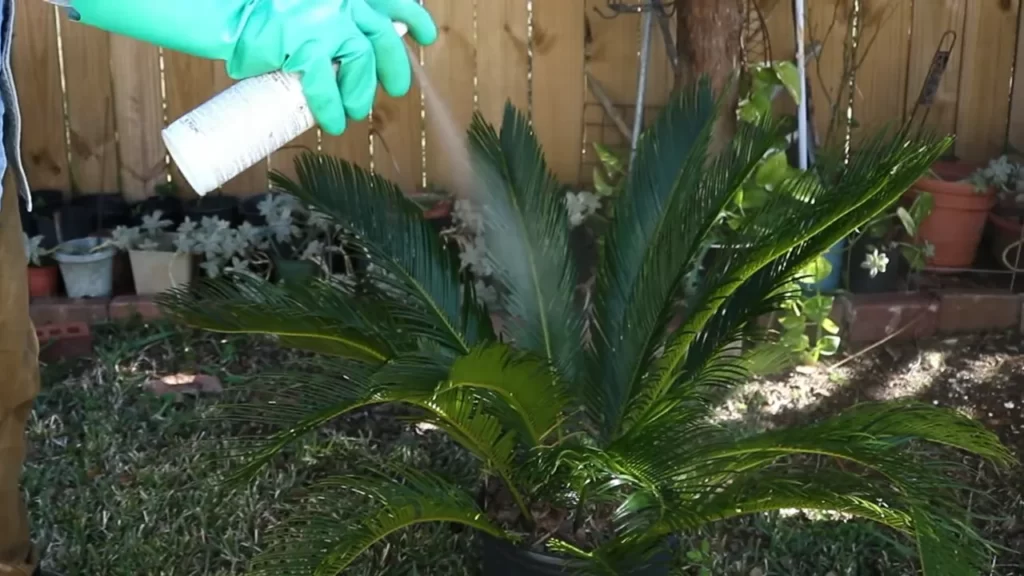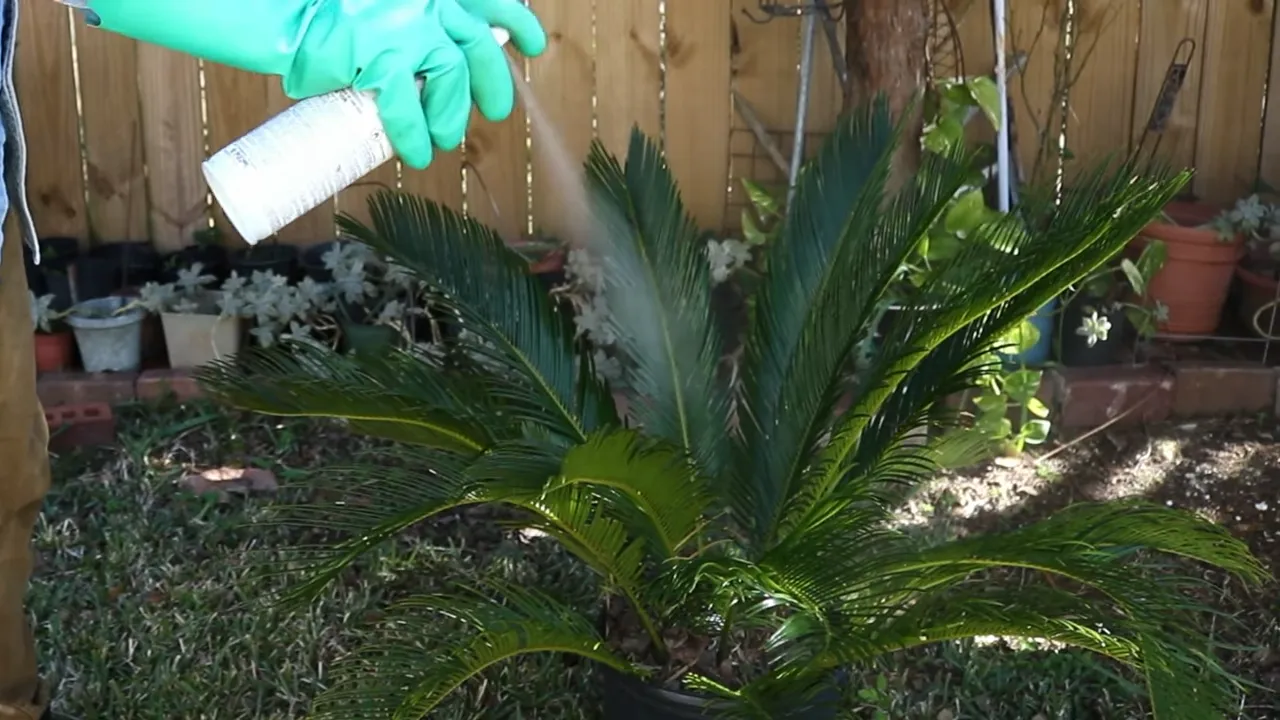Pyrethrin has long been heralded as an effective tool in the arsenal of those battling pests, particularly in the realm of agriculture. Harvested from chrysanthemum flowers, this natural insecticide plays a pivotal role in maintaining the balance of ecosystems, especially when pests threaten to disrupt it. But like all tools, it’s essential to grasp its full impact, especially concerning beneficial organisms like nematodes.
Yes, Pyrethrin can indeed adversely affect nematodes. While designed to target more detrimental pests, this insecticide doesn’t always discriminate, posing potential risks to these valuable soil-dwelling microorganisms. The essence of our exploration hinges on this interaction and its broader implications.
Nematodes, though microscopic, play a significant role in maintaining soil health and fertility. Their interaction with substances like Pyrethrin, therefore, becomes a focal point for sustainable agricultural practices and ensuring a harmonious ecological balance.
Origin and Extraction
Pyrethrin is a naturally occurring insecticidal compound extracted from the flowers of chrysanthemum plants, specifically Chrysanthemum cinerariifolium. These plants are primarily cultivated in certain regions of Africa and Europe. The extraction process involves the crushing of dried chrysanthemum flower heads, leading to the release of pyrethrin oils.
These oils, rich in pyrethrin, get separated using solvents. Subsequent steps purify and refine the substance, ensuring it meets quality standards.
Common Uses in Agriculture and Pest Control
Pyrethrin stands out as a highly sought-after insecticide, particularly in organic farming, due to its low toxicity to mammals and swift degradation in the environment.
- Crop Protection: Pyrethrin is applied on crops to shield them from a wide range of insects, ensuring healthier plant growth and better yields.
- Household Pest Control: It’s found in many household insecticides as it’s effective against mosquitoes, flies, and other pests, while posing minimal risks to humans and pets.
- Livestock and Pet Products: Protecting animals from fleas, ticks, and other pests, pyrethrin is commonly incorporated in shampoos and sprays.

Mechanism of Action
The mode of action for pyrethrin is neurological. When insects are exposed to this substance, it impacts their nervous systems. Pyrethrin targets the sodium channels in insect neurons, leading to rapid activation. This continuous stimulation causes paralysis and eventual death of the insect.
The efficacy of pyrethrin is often magnified when combined with synergists, which inhibit insect enzymes responsible for breaking down pyrethrin, extending its activity.
Nematodes 101
Classification and Types
Nematodes, commonly known as roundworms, are microscopic worms found in various habitats, including soil, freshwater, and marine environments. They belong to the phylum Nematoda and are one of the most diverse groups in the animal kingdom.
- Free-living Nematodes: These nematodes live in the soil and feed on bacteria, fungi, and other microorganisms.
- Parasitic Nematodes: This group infects plants, animals, and even humans, drawing nutrients from their hosts.
- Decomposer Nematodes: Engaging in decomposition, they play a part in nutrient cycling.
Role in Soil Health
Nematodes play an essential part in maintaining soil health. Their activities help in:
- Aeration: As nematodes move through the soil, they create minute channels that enhance air and water circulation.
- Decomposition: They contribute to the breakdown of organic matter, enriching the soil with nutrients.
- Biological Control: Some nematodes can control pests by preying on them.

Benefits and Potential Harms
Nematodes, though tiny, have a big impact on ecosystems.
- Benefits:
- Pest Control: Certain nematodes attack insect larvae, offering a biological pest control solution.
- Soil Health: They enrich soil by releasing nutrients from decaying organic matter.
- Potential Harms:
- Crop Damage: Parasitic nematodes can severely harm crops, leading to significant yield losses.
- Human Health: Some nematodes can infect humans, causing diseases like filariasis.
Pyrethrin-Nematode Interaction
Chemical Impact on Nematodes
While pyrethrin is a powerful insecticide, its interaction with nematodes is noteworthy. When nematodes are exposed to pyrethrin, there’s evidence of altered behavior, reduced mobility, and in some cases, mortality. This is due to pyrethrin’s interference with nematode neurotransmission.
Immediate Reactions
Upon immediate exposure to pyrethrin, nematodes show signs of distress. They may:
- Become lethargic or immobile.
- Exhibit uncoordinated movements or twitches.
- Experience a significant decline in feeding.
Long-term Effects on Nematode Populations
Chronic exposure to pyrethrin can lead to:
- Population Decline: Continuous exposure can lead to a gradual decrease in nematode numbers.
- Behavioral Changes: Some nematodes may adapt to the presence of pyrethrin, leading to behavioral modifications.
- Resilience: Over time, certain nematode populations could develop resistance to pyrethrin, reducing its efficacy.

Other Nematode-friendly Pesticides
When safeguarding crops, it’s pivotal to choose pesticides that protect beneficial organisms like nematodes. Here are some nematode-friendly pesticides to consider:
- Neem Oil: Derived from the neem tree, this organic solution disrupts the life cycle of various pests without harming nematodes.
- Diatomaceous Earth: Composed of crushed fossilized algae, it physically damages pests but leaves nematodes unaffected.
- Insecticidal Soaps: These work by breaking down the outer shells of pests. However, they’re gentle on nematodes and other beneficial organisms.
Organic Farming Practices
Organic farming is a sustainable method that uses natural processes and substances. It promotes biodiversity while minimizing harm to the environment. Some key practices include:
- Crop Rotation: Alternating crops breaks the cycle of pests and diseases.
- Companion Planting: Some plants repel pests. Growing them next to susceptible plants can reduce infestations.
- Natural Fertilizers: Using compost or manure enhances soil health, supporting a balanced ecosystem.
Biological Control Methods
Instead of chemicals, why not use nature to fight pests? Here are some biological controls:
- Predatory Insects: Ladybugs, lacewings, and spiders prey on harmful pests, providing a natural line of defense.
- Bacterial and Fungal Solutions: Certain microbes can target pests without affecting beneficial organisms.
- Parasitic Wasps: These tiny wasps lay their eggs inside pests, reducing their numbers.
Nematode Conservation
Importance of Preserving Nematode Populations
Nematodes play a myriad of roles in ecosystems. From decomposing organic matter to controlling pests, their contribution is undeniable. Maintaining a healthy nematode population:
- Ensures soil fertility.
- Provides a natural pest control method.
- Enhances nutrient cycling in the soil.
Steps to Protect Beneficial Nematodes in Gardens and Farms
To foster a thriving nematode community:
- Limit Chemical Use: Pesticides can decimate nematode populations. Choose organic or nematode-friendly alternatives.
- Provide Organic Matter: Composting enriches the soil and provides food for nematodes.
- Maintain Soil Structure: Avoid excessive tilling. It can disrupt the soil ecosystem.
- Stay Informed: Knowledge about the latest research can guide farming choices.
Recognizing Harmful Nematode Species
While many nematodes benefit the environment, some can be detrimental. Identifying harmful species can guide effective control measures:
- Root-knot Nematodes: These parasites form galls on plant roots, stunting growth.
- Cyst Nematodes: Known for attacking staple crops, they form cysts on roots.
- Stem and Bulb Nematodes: They affect the stems and bulbs of plants, leading to rot.
To differentiate between beneficial and harmful nematodes, soil tests or professional identification methods can be employed.
Frequently Asked Questions
Does Pyrethrin affect all types of nematodes?
Not all nematodes respond to Pyrethrin in the same way. While some might be adversely affected, others might show resilience or even indifference to its presence.
Are there safe alternatives to Pyrethrin in pest control?
Yes, there are numerous other methods and substances, both organic and synthetic, that can be effective in controlling pests without harming beneficial organisms.
How can farmers ensure they aren’t harming beneficial nematodes?
Farmers can adopt practices that prioritize soil health, like crop rotation, and opt for biological controls over chemical ones whenever possible.
Is Pyrethrin use common in organic farming?
While Pyrethrin is derived from natural sources and can be used in organic farming, its application should be approached with caution, considering its potential impact on beneficial organisms.
Conclusion
The delicate balance of our ecosystem relies on a harmonious interaction between its constituents. Pyrethrin, with its potent properties, exemplifies the double-edged sword many substances wield – offering benefits but not without potential consequences.
For those in agriculture or even home gardeners, the onus lies in making informed choices. As the world gravitates towards sustainable practices, understanding these interactions and making choices that bolster, rather than hinder, our environment becomes paramount.
